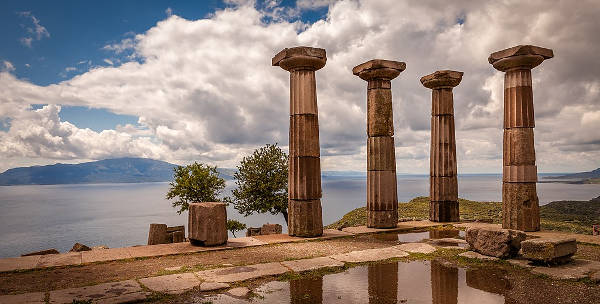A brief history of the Turkish luxury carpet
Design — Jan 14.2021
In a hypothetical carpet atlas, Turkey would undoubtedly be an important world reference. As with other Asian countries, it is not known exactly when local carpet production began. What is known is that as early as the 13th century, villages and semi-nomadic peoples in various areas of present-day Turkey were knotting beautiful pieces by hand. Today, luxury Turkish carpets are among the most sought-after by experts and enthusiasts of ethnic artefacts.
Characteristics of Turkish luxury carpets
What makes Turkish carpets unique above all others is their ability to tell the story of the Country from which they originate. Anatolian carpet craftsmanship has been influenced by historical and social developments in Turkey, and has been able to transfer these cultural influences into its creations. This is evidenced by certain details in the decorations of traditional local carpets, inherited from ancient Byzantine designs, the typical motifs of Caucasian nomadic tribes and, finally, the influences of Islamic culture.
Turkish luxury carpets are a perfect synthesis of ethnic, religious and cultural pluralism in this region, which over the centuries has witnessed the birth and prosperity of some of the most powerful and advanced civilisations of the past.
The pluralism that has always characterised Ottoman society has led to the emergence and definition of distinct styles, which have developed in various cities and regions of Turkey. There are thus more than 20 types of carpet, all of which were produced in the historical region of Anatolia.
Of all Turkish carpets, Hereke carpets are the finest and most precious. They are made of silk and are often embellished with gold or silver threads. The decorations are very elaborate and are reminiscent of Persian or Egyptian carpets.
Less precious, but no less valuable, are the Turkish carpets known as Pergamon or Bergama. In this type of carpet, the influences of nomadic Turkmen populations and the Turkmen tradition are more evident. The weft, warp and pile are made of wool fibres and the knots are not particularly dense. This makes the carpet soft and easy to handle. The dimensions of this type of product are rather small, while the patterns are elaborate and made with strong colours. The carpet also has a border that frames the central body, which is often decorated with geometric or floral motifs.
Ghiordes carpets are among the best known. Ghiordes are prayer carpets that are typical of Islamic culture. They are small in size and are characterised by intense colours and the use of wool fibres or a mixture of wool and silk. The carpet is decorated by a central solid-coloured niche. In some cases, on either side of the niche are two columns on which the mirhab rests, with a lamp in the centre. Floral motifs complete the decoration of the artefact and are found both on the sides of the niche and on the border of the carpet. Red and blue are the most frequently used colours for this type of luxury carpet, with ivory, green or violet details completing the work. A characteristic type of knot is used in the construction of this type of carpet. This is a symmetrical knot, which is known as a Turkish knot or a Ghiordes knot.
Another type of prayer rug whose production has developed in Turkey is the Melas carpet. As with the Ghiordes carpet, there is a thick border framing the central body in which a prayer niche is represented. What distinguishes these two types of carpet is not only the different production area but also the different use of colours. While Ghiordes carpets use a few very intense colours, Melas carpets use red and light brown tones in the central area. The elaborate patterns on the outside of the carpet are made in brighter colours, ranging from deep red and white to yellow, green and purple.
The production of luxury carpets in Turkey was developed as early as the 13th century and continued according to craftsmanship techniques until at least the 19th century. The dedication and care of the Turkish craftsmen has continued a tradition of great value. Turkish carpets, made of carded and hand-knotted wool and dyed with vegetable colours, have been conquering European merchants and peoples since the 14th century. Today, this ancient tradition has been rediscovered and enhanced, allowing lucky connoisseurs to have an original hand-knotted Turkish carpet in their home.
Nodus creates prestigious carpets.
Bring luxury into your home!
>>> CONTACT US! <<<
![]() Nodus has reinvented the luxury carpet. It was in fact the first brand to propose the concept of the rug as a work of contemporary art.
Nodus has reinvented the luxury carpet. It was in fact the first brand to propose the concept of the rug as a work of contemporary art.
Nodus has always created exclusive products that furnish the most beautiful homes in the world. Do you want to make your home inimitable as a work of art?
Bring a hand knotted rug of the highest quality and design into the spaces of your daily life! Give your family and the people you love the beauty of a dream masterpiece! Every piece of Nodus is designed by famous Designers, making it recognisable and prestigious. In this way, each rug is unique: you will not find another one like it. Like all beautiful and unrepeatable things, one piece in the Nodus collection sets you apart and speaks to others about your taste and elegance. CONTACT US!